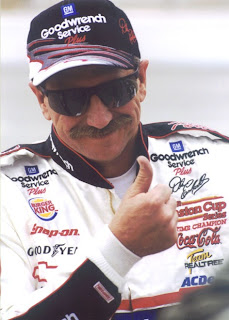Read more!
Tuesday, May 18, 2010
Interview with Dr. Robert Hubbard - HANS Device Inventor
FOX Sports Interview with Dr. Robert Hubbard, the inventor of the HANS Device.
<a href="http://video.msn.com/?mkt=en-us&amp;brand=foxsports&amp;playlist=videoByUuids:uuids:f45549c8-2f23-4691-9819-43b71a3a7895&amp;showPlaylist=true&amp;from=IV2_en-us_foxsports_videosearch&amp;fg=everyzing" target="_new" title="Wind Tunnel: Dr. Robert Hubbard">Video: Wind Tunnel: Dr. Robert Hubbard</a>
Taken from: http://multimedia.foxsports.com/m/video/30544424/wind-tunnel-dr-robert-hubbard.htm?pageid=15362&seek=3.009
Read more!
Read more!
The Top 5 Stories that Changed Sports this Decade
The top 5 stories that changed the world of sports as we know it in the 2000s.
#5 – Dale Earnhardt’s death in the 2001 Daytona 500; February 18th, 2001.
Sports heroes are not supposed to be killed suddenly in a sport they love. However, it does happen. On Sunday, February 18th, 2001, on the final lap in NASCAR’s season-opener, the Daytona 500, Dale Earnhardt slammed the outside retaining wall in turn 4. As the field passed by, Earnhardt’s car slid to the infield, as the car he owned driven by Michael Waltrip won the Daytona 500. Rescue workers rushed to Earnhardt’s car, where he was airlifted to a local hospital, and later pronounced dead.
Sometimes it takes tragedy to find a fault in a sport. Following the incident, NASCAR took many steps to ensure driver safety. They began the mandated use of the HANS device, a head-and-neck restraint system. Just recently, the new Car of Tomorrow was introduced to make the car safer.
Unfortunately, it often takes tragedy to show that change is necessary.
Taken from:
http://section26sports.wordpress.com/2010/01/02/the-top-5-stories-that-changed-sports-this-decade/
Read more!
2010 Snell Ratings
Head Form = Circumference
A= 50 cm
C= 52 cm
E= 54 cm
J= 57 cm
M= 60 cm
O= 62 mm
The biggest change in the new helmet safety standard is they are going to adopt variable head form sizes. In prior Snell standards, they tested the helmets using a standard sized “dummy” head with a standard circumference to mimic the size, shape and weight of a human head. The new 2010 standard is going to require a number of variable head forms that will better approximate the cubic mass and circumference relationship of various head sizes. Everyone obviously does not have the same head size, so Snell is requiring the manufacturers to create six different head forms to test.
Every helmet size will be a little more unique. Manufacturers are going to have to change construction somewhat between sizes in a given model and this is requiring them to look at new, advanced shell construction methods to give them as light a weight shell as possible that’s also as strong as possible. For each helmet tested, it is dropped twice and there are different criteria for the first and second drops depending on head form size.
Since the helmets will be properly sized to the actual head geometry of the racer, it’s going to be a better helmet because it’s not going to shift or move during an impact.
With advances in head and neck restraint systems (HNR),such as the HANS Device, the new Snell standard will have a component that will test for compatibility of the helmet shell with the HNR. The attachment anchor points (where the device attaches to the helmet) will require proper reinforcement in those areas to withstand lateral shear force that they may see in an impact. Manufacturers will most likely view the helmets and HNR as part of an overall driver safety system.
Snell introduces new helmet ratings every five years. If you have an SA2005 helmet, it should be compatible for some time to come. When the SA2005 standard was introduced, most sanctioning bodies started phasing out the use of SA95 helmets. For those that will be interested in getting one of the new SA2010 rated helmets, availability from manufacturers will most likely begin in October 2010 and be phased in throughout 2011.
If you would like to read more about Snell testing and standards, you can visit their website at www.smf.org.
Read more!
Subscribe to:
Posts (Atom)


